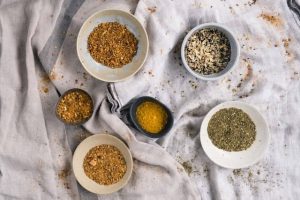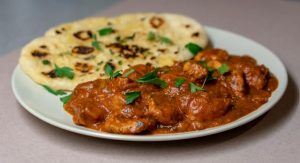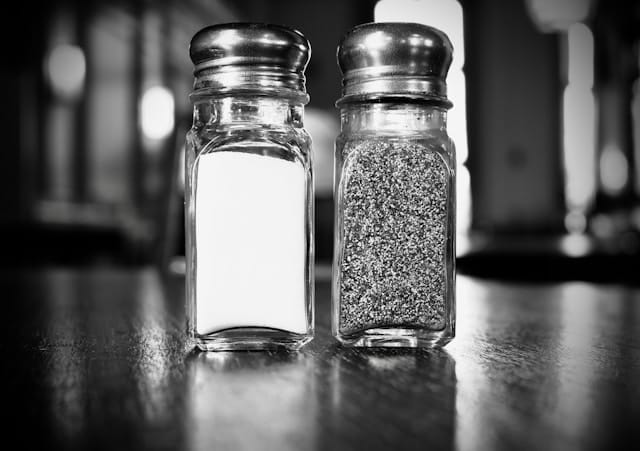Alright spice enthusiasts, gather ’round! Chef Spice Harrington here, ready to whisk you away on a fragrant journey far beyond the humble salt and pepper shaker. For too long, these two have hogged the spotlight, but trust me, there’s a whole universe of flavor out there just waiting to be explored. Think of it like this: salt and pepper are the black and white movies of the culinary world, classics for sure, but what about Technicolor?
Aromatic Adventures Await
We’re diving headfirst into the vibrant world of global spice blends. These aren’t just random combinations; they’re carefully curated symphonies of flavor, each with its own history, culture, and culinary purpose. These blends can transform a simple dish into an exotic experience, and I’m here to show you how to use them like a pro.
Ras el Hanout: The Moroccan Masterpiece
Let’s start with Ras el Hanout, a Moroccan blend that translates to “top of the shop.” This is serious stuff! It can contain dozens of spices – sometimes even over 30! – including cardamom, cloves, cinnamon, nutmeg, mace, allspice, ginger, turmeric, various peppers, and even dried rose petals or lavender. The exact composition is often a closely guarded secret, passed down through generations.
History and Origins: Ras el Hanout has ancient roots in Moroccan cuisine, used in tagines, couscous, and other traditional dishes. The blend was created by spice merchants who wanted to showcase their best and most exotic spices, hence the name “top of the shop.” It’s a testament to the rich spice trade and the importance of flavor in Moroccan culture.
Culinary Applications: Ras el Hanout adds warmth, complexity, and a touch of sweetness to dishes. It’s fantastic with lamb, chicken, or vegetables. A pinch can also elevate soups and stews. Don’t be afraid to experiment! I once added it to a chocolate cake (a tiny amount!), and the result was surprisingly delicious.
Chef Spice’s Tip: When using Ras el Hanout, start with a small amount and adjust to taste. Its intensity can vary depending on the blend, so a little goes a long way.

Ras el Hanout Recipe:
- 1 tablespoon ground cinnamon
- 1 tablespoon ground ginger
- 1 tablespoon ground turmeric
- 1 teaspoon ground coriander
- 1 teaspoon ground cumin
- 1/2 teaspoon ground cloves
- 1/2 teaspoon ground cardamom
- 1/4 teaspoon ground nutmeg
- 1/4 teaspoon ground allspice
- Pinch of saffron threads, crushed (optional)
Mix all ingredients well and store in an airtight container. Boom! Homemade Ras el Hanout. Feel free to adjust the amounts to your liking.
Garam Masala: The Indian Essential
Next up, we have Garam Masala, a cornerstone of Indian cuisine. Unlike Ras el Hanout, Garam Masala typically contains fewer ingredients, but each one is carefully chosen to create a warming and aromatic blend. Common spices include cardamom, cinnamon, cloves, cumin, coriander, nutmeg, and black pepper. The proportions vary from region to region, and even from household to household.
History and Origins: Garam Masala’s origins can be traced back to ancient India, where spices were used not only for flavor but also for their medicinal properties. The name “Garam Masala” literally means “warming spice mixture,” reflecting its ability to warm the body and aid digestion. The blend has been used in Indian cooking for centuries, adding depth and complexity to curries, stews, and vegetable dishes.
Culinary Applications: Garam Masala is incredibly versatile. It’s often added towards the end of cooking to preserve its aroma and flavor. It’s delicious in curries, lentil soups, and vegetable dishes. You can even sprinkle it over roasted nuts for a flavorful snack. I love using it in my butter chicken recipe – it’s the secret ingredient!
Chef Spice’s Tip: Toast the spices before grinding them to enhance their flavor. This will bring out their essential oils and create a more complex and aromatic blend.
Garam Masala Recipe:
- 2 tablespoons coriander seeds
- 1 tablespoon cumin seeds
- 1 tablespoon cardamom pods
- 1 tablespoon black peppercorns
- 1 cinnamon stick
- 1 teaspoon cloves
- 1/2 teaspoon nutmeg
Toast all spices in a dry pan over medium heat for a few minutes, until fragrant. Let cool, then grind to a fine powder. Store in an airtight container. You’ll be amazed at the difference fresh-ground spices make!

Beyond the Basics: Other Global Spice Blend Gems
Ok, these are just two of the many amazing spice blends from around the globe. Here are some other blends that are worth looking into:
- Berbere (Ethiopia): A fiery blend of chili peppers, garlic, ginger, basil, and other spices.
- Za’atar (Middle East): A tangy and herbaceous blend of thyme, sesame seeds, sumac, and salt.
- Herbes de Provence (France): A fragrant blend of thyme, rosemary, oregano, marjoram, and lavender.
- Seven Spice (Lebanon): A blend of allspice, black pepper, cinnamon, cloves, coriander, cumin, and nutmeg.
Embrace the Spice Life!
So, there you have it! A glimpse into the wonderful world of global spice blends. Don’t be afraid to experiment, explore, and discover your own favorite combinations. Remember, cooking should be fun, accessible, and a way to connect with yourself and others. Get out there, spice things up, and let your taste buds travel the world!
Stay Spicy!
– Chef Spice Harrington






